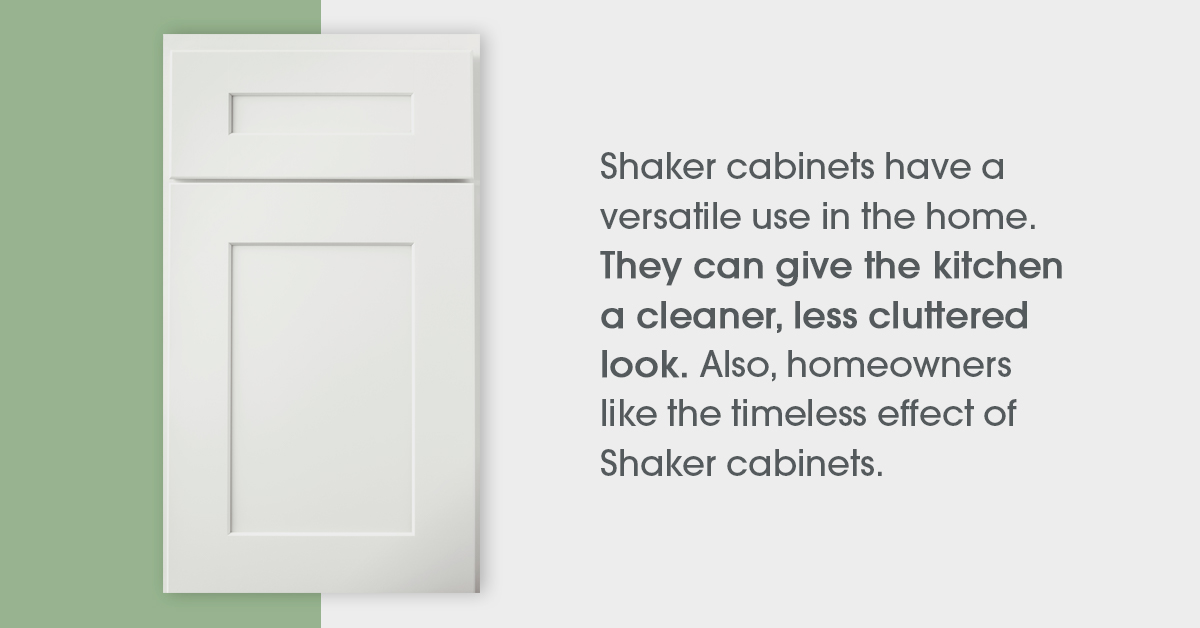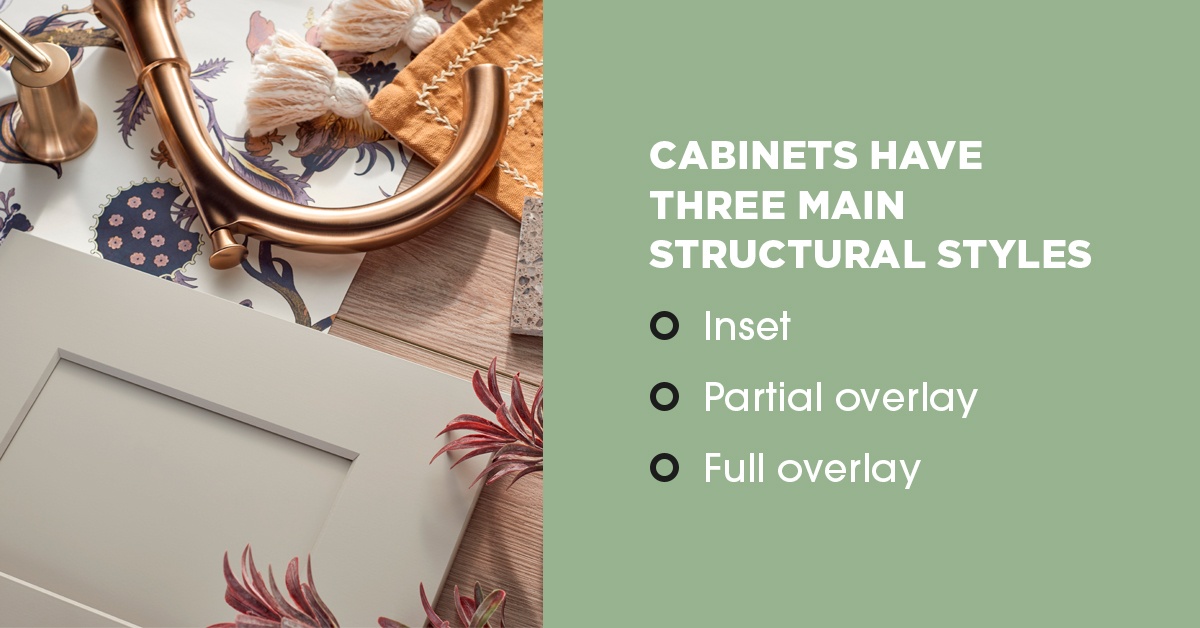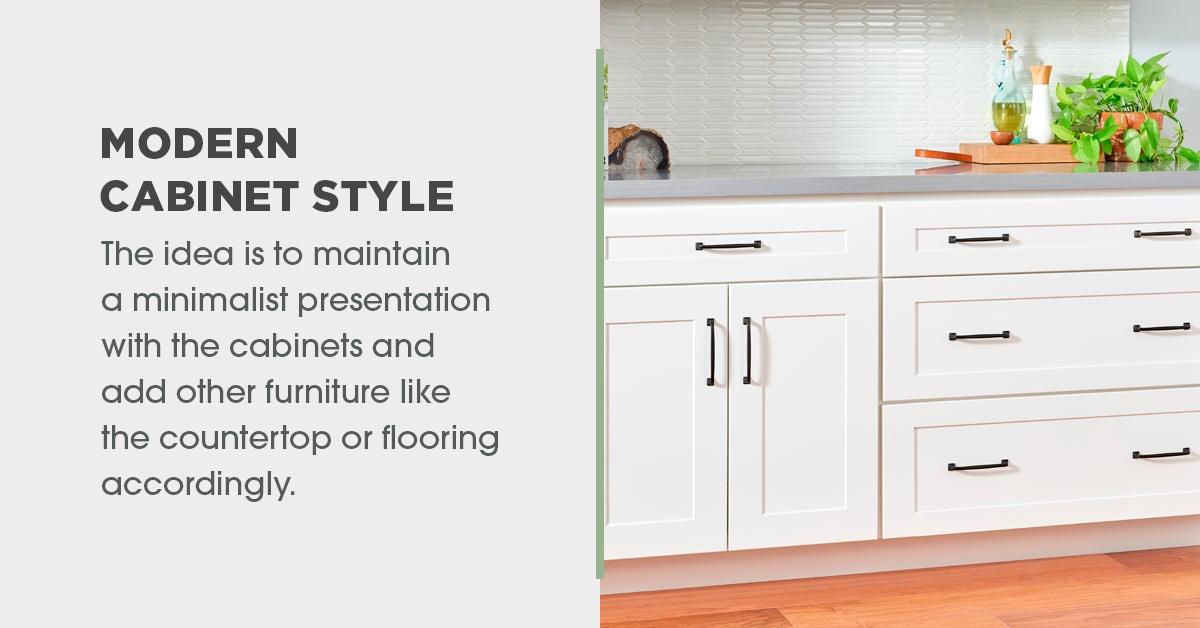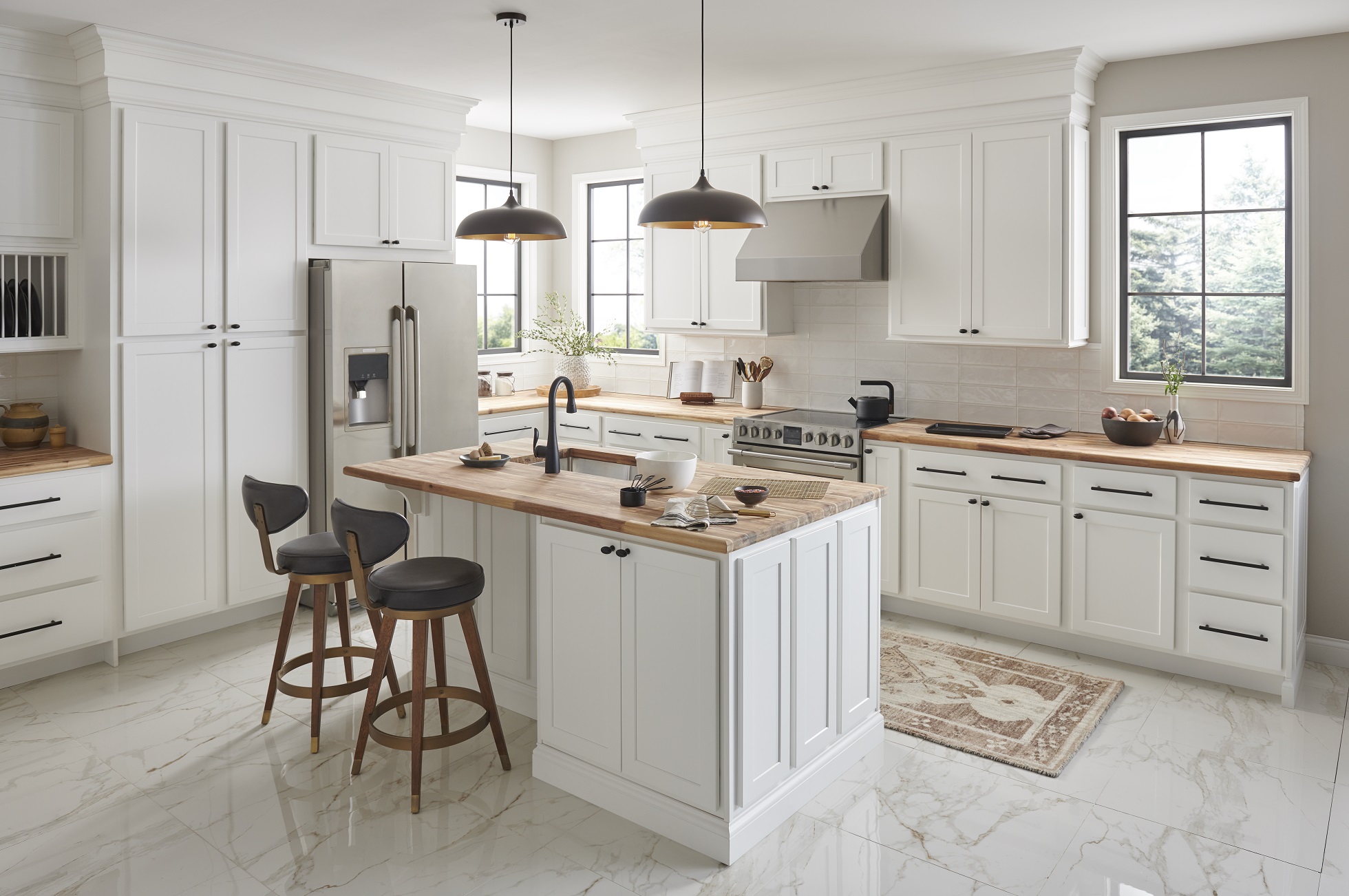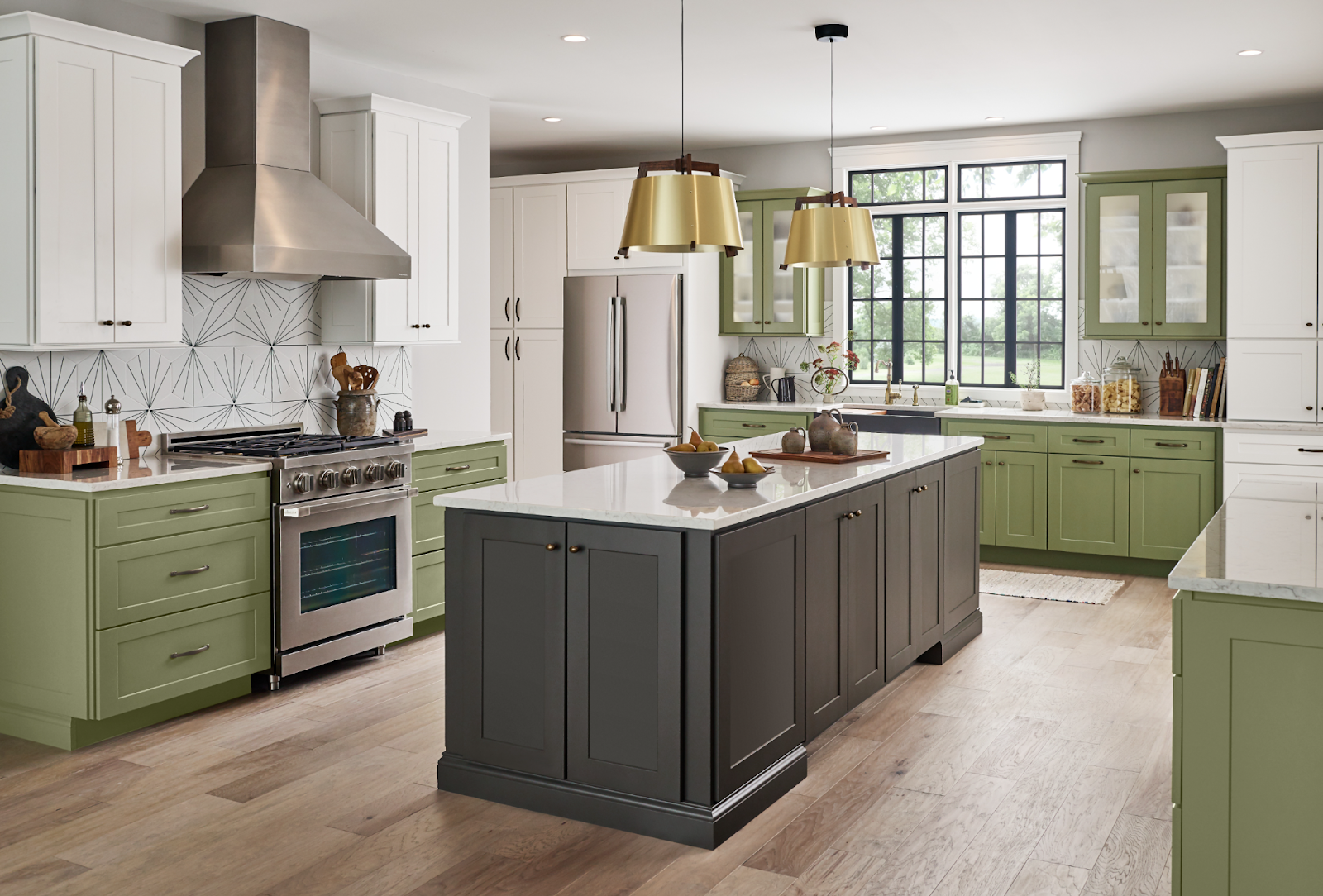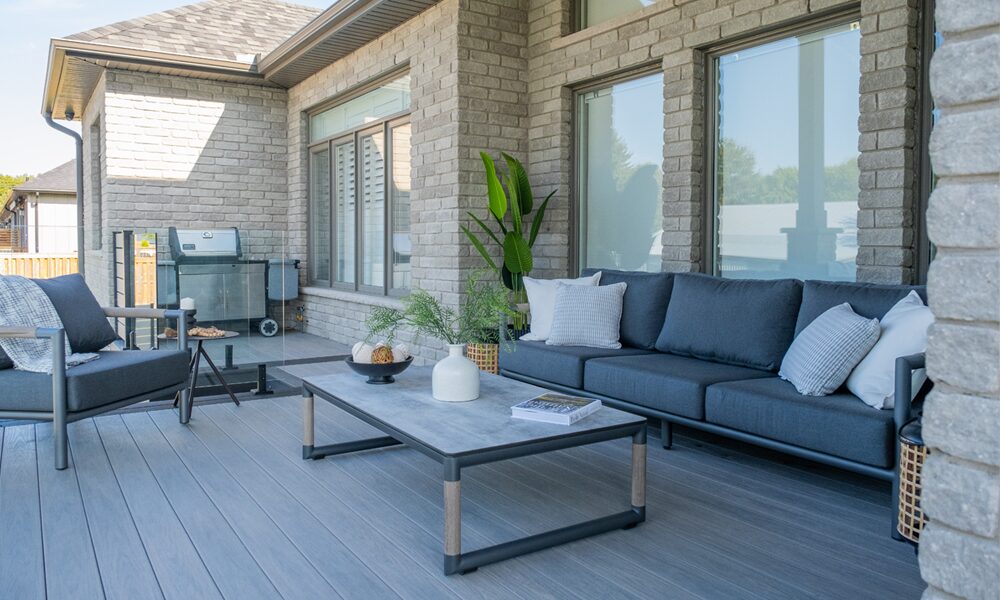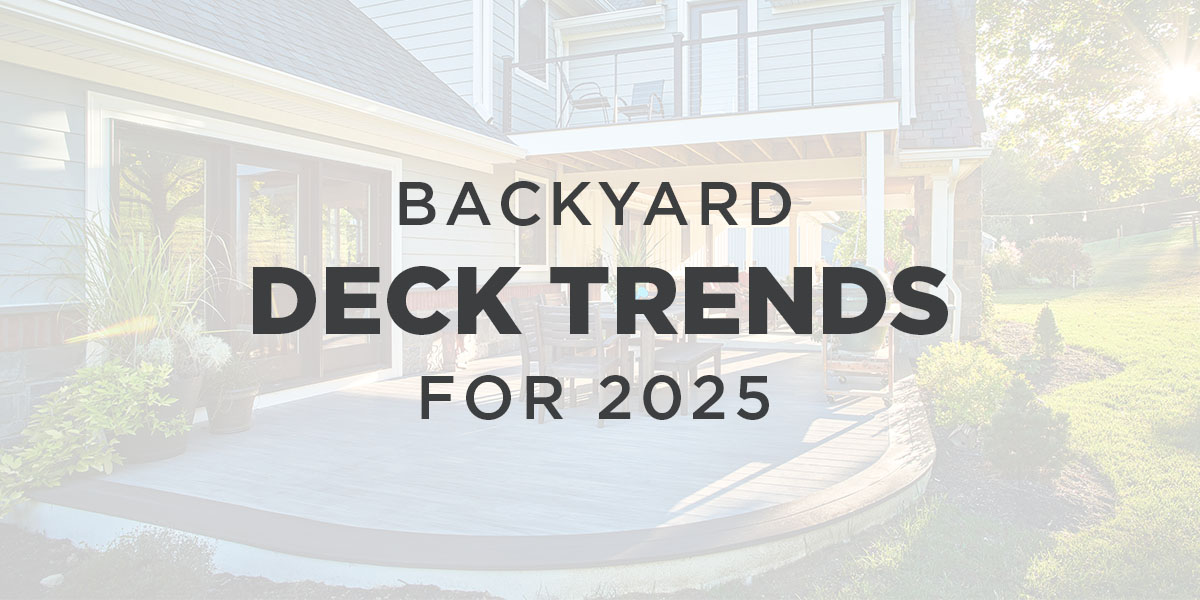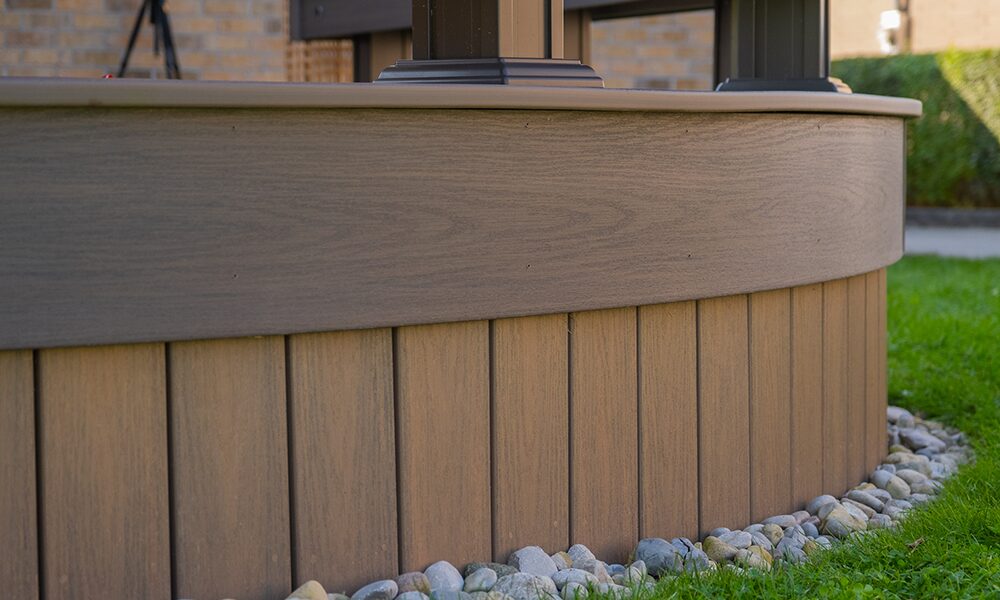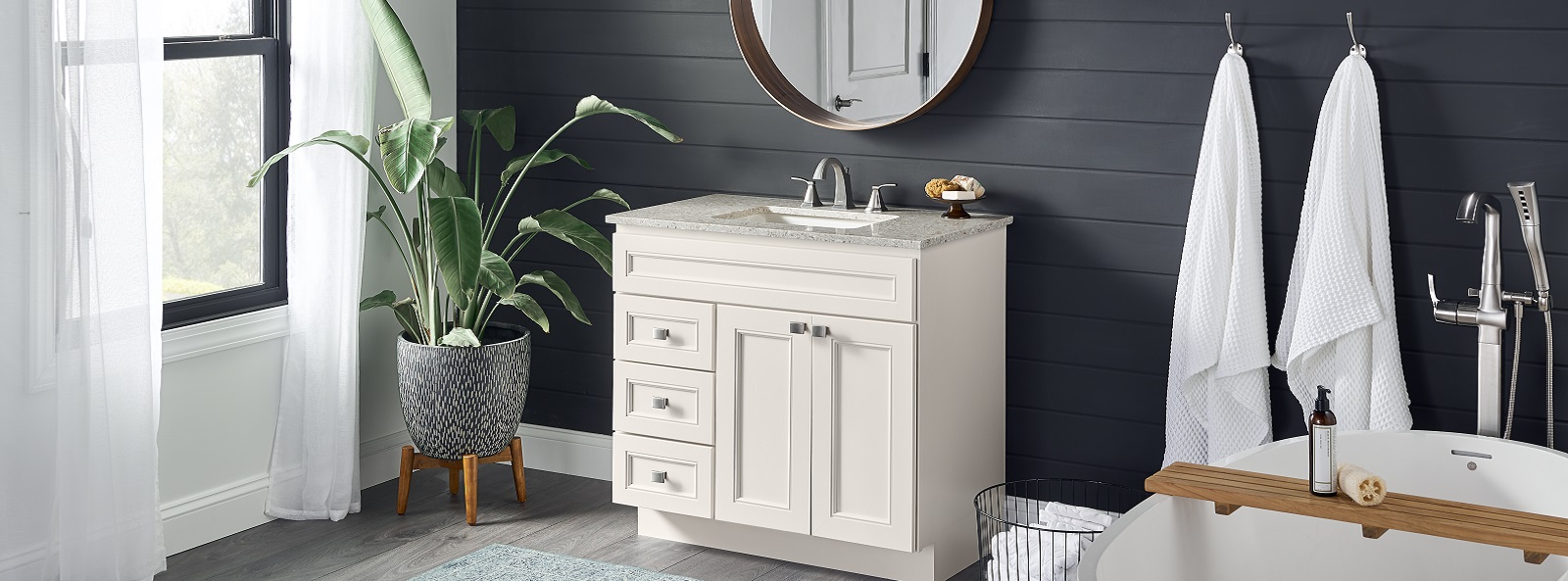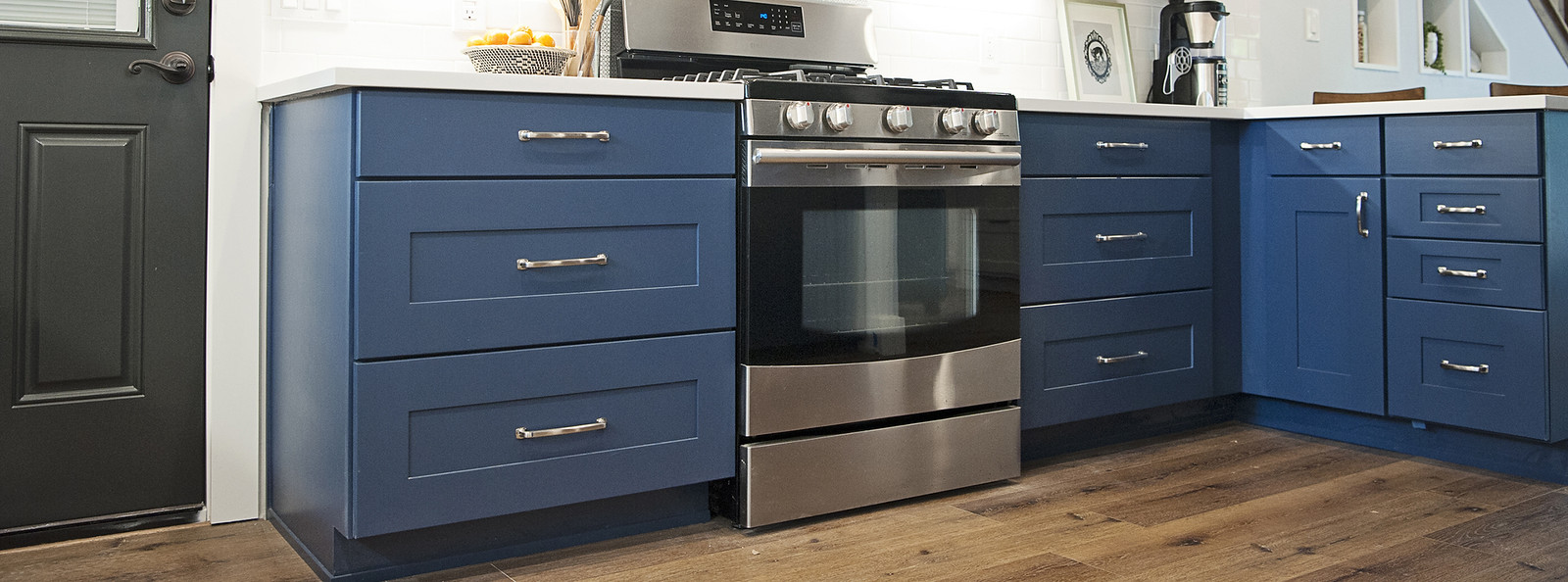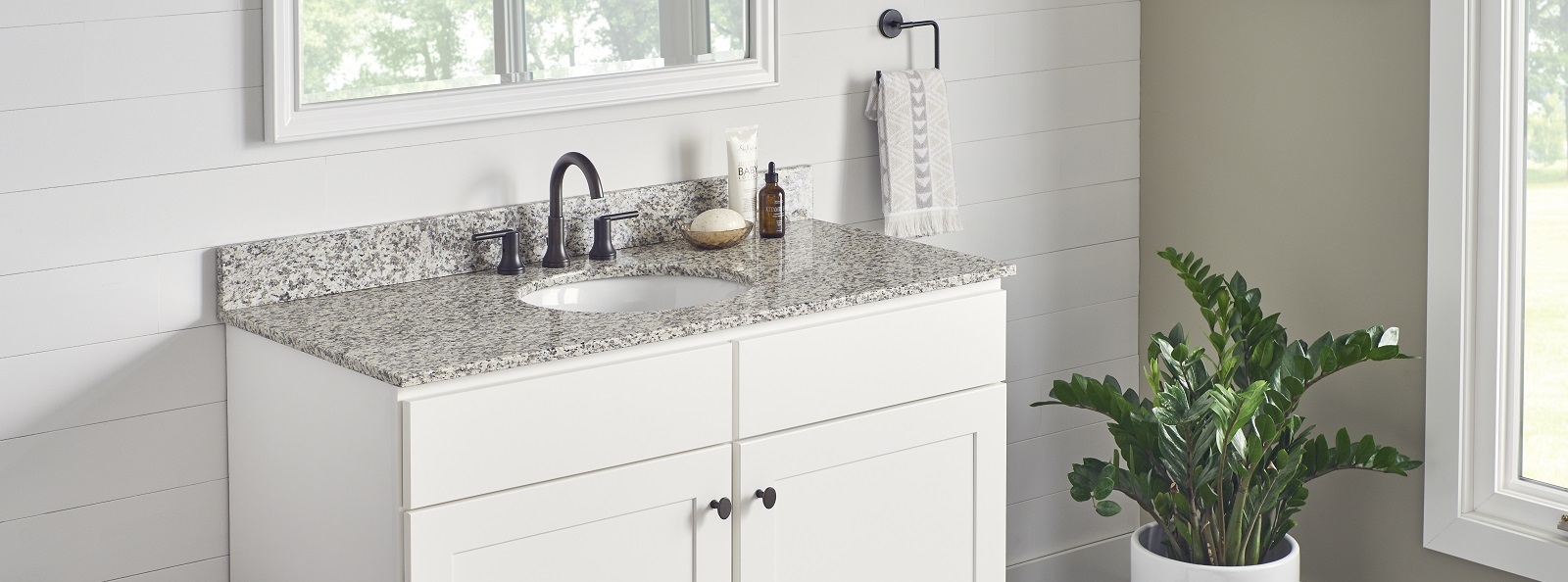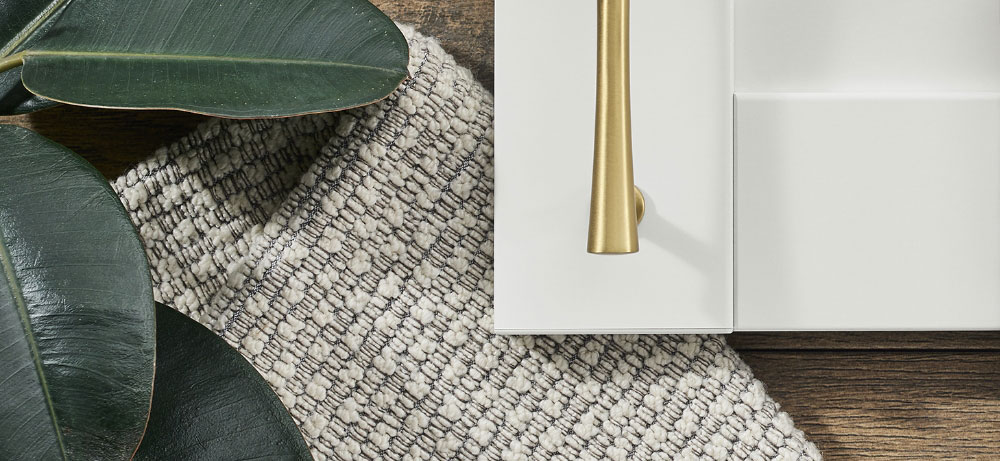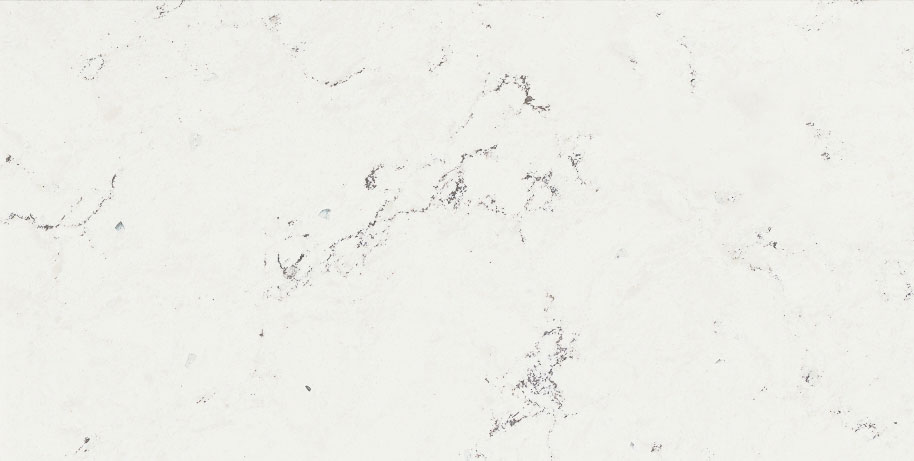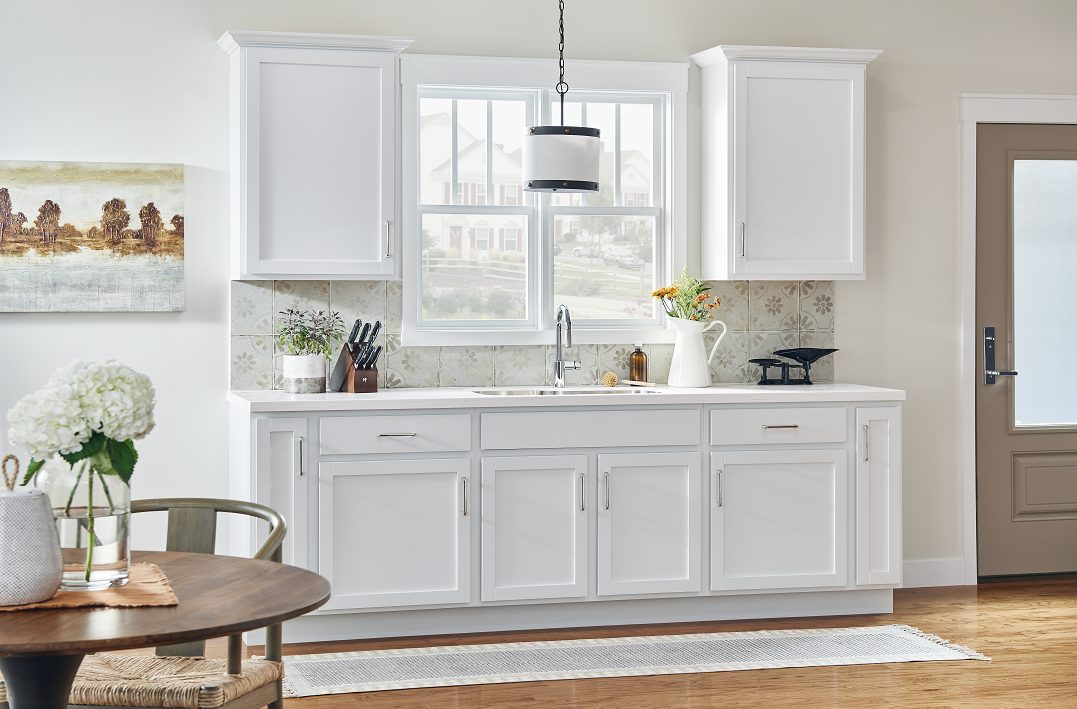
WHAT ARE SHAKER-STYLE CABINETS?

IN THIS BLOG…
Shaker-style cabinets get their name from the Shakers, otherwise known as the United Society of Believers in Christ’s Second Appearing. Today, there aren’t many Shakers left — only one Shaker community remains. But their furniture has had a lasting effect. The hallmark of Shaker furniture is its simplistic look, using local American woods like pine or maple and doing without veneers, inlays or carving. Shakers thought this simplicity made the furniture honest. Shaker furniture is now on display as memorabilia in historical museums across the country, the Metropolitan included.
However, designers, architects and homeowners alike still have a great appreciation for Shaker furniture. They demonstrate this through Shaker-style furniture, a near-replica of original Shaker furniture. Shaker-style cabinetry, especially, are desirable for many people who have any investment in interior design. Clean lines are the first thing that comes to mind when you think about Shaker-style cabinets, and flexibility is the second. An affection for Shaker-style cabinets comes less from their straightforward construction, and more from their uninvolved charm.
WHAT ARE SHAKER CABINETS?
Shaker cabinets are best known for their boxy look — rectangular, to be exact. Imagine a slab of wood in the shape of a rectangle. Within it, picture another rectangle engraved inside, but only slightly smaller. The overall appearance is a four-cornered frame with an inset panel. Any curves are gentle, and most lines are straight. The formal name for the panel-and-frame structure of a Shaker cabinet is rail-and-stile construction. The rail represents the inset panel’s width-side overlay, and the stile refers to the length-side overlay. Together, a Shaker cabinet has five pieces — the panel, two stiles and two rails.
You might have heard the terms Mission cabinets and Shaker cabinets used interchangeably, although there is a distinction. While Shaker cabinets originated in 1774, Mission cabinets came along much later, at the end of the 19th century. The Arts & Crafts movement prompted the design of Mission cabinets. Handcraftsmanship defined this movement, which differed from the Shakers in this way. Mission-style furniture is oak, emphasizing flat planes that bring attention to the wood grain. For this reason, Mission cabinets usually have a heavier look, whereas Shaker cabinets come off as delicate.
BENEFITS OF SHAKER STYLE CABINETS
Shaker cabinets have a versatile use in the home, but Shaker-style kitchen cabinets seem to be their most cherished use. The cabinets can give the kitchen a cleaner, less cluttered look. Most of all, homeowners like the timeless effect of Shaker cabinets. If you feel the need to remodel, there is one less thing to think about. Shaker cabinets don’t feel outdated. A simple color change — from unfinished wood to black or gray — can give Shaker cabinets a more modern look. The style of Shaker cabinets also prizes repetition. If you decide to use Shaker cabinets in your home, having all your drawers and cabinets in the same style ensures a clean, consistent look.
In addition to all their other perks, Shaker-style cabinets also happen to be economical. When you compare Shaker cabinets to other furniture styles, they are cheaper overall because of their ease of construction. Since there are many ways to reflect the character of Shaker cabinets in the way you adorn them, you can choose to customize the cabinets to your liking or leave them as is. Either way, they’ll maintain their functional use.
TYPES OF SHAKER CABINETS
The unfettered look of Shaker cabinets allows for a diverse range of stylistic techniques to personalize them. Shakers themselves made many variations to the original style in the 1800s. Their popularity in the community made it essential to tailor the cabinets for individual taste. Sometimes, this meant dividing the section into smaller pieces, termed mid-rails or mid-stiles. However, there are countless other ways to alter the look of your cabinets, whether Shaker or otherwise.
CABINET CONSTRUCTION
Cabinets, in general, have three main structural styles — inset, partial overlay or full overlay. The construction of the cabinets alone affects the look and functionality of the piece. Here’s a look at the different Shaker cabinet structure styles.
t
- Inset: Inset cabinets sit within a frame that surrounds the five-piece structure. This feature is typical of British kitchens. The design increases the stability of the cabinets as the frame grounds them to the floor.
t
- Partial overlay: Cabinets with a partial overlay have a small gap between the cabinet doors. The framing and gaps mean no internal hardware is necessary to open the cabinets, which reduces costs. On the other hand, if you want a completely flat appearance for your cabinetry, an inset or full-overlay cabinet may be a better option. This design is most common in American homes.
t
- Full overlay: With a full overlay, cabinet doors cover the cabinetry face, meaning no raised edges. People tend to like this aesthetic the most. Its construction also provides about an extra inch of space for the cabinet itself, since the cabinet doors don’t rely on actual cabinet space to close. Full-overlay cabinets typically don’t have frames.
You should also consider the type of edge you want in your kitchen cabinets. The following Shaker cabinets have a beveled edge, which can help you achieve a unique look for your kitchen.
t
- Berwyn: These full-overlay cabinets combine elegance and tradition. Berwyn Shaker cabinets feature an attractive outer edge with a recessed center panel. Get them exclusively in our Opal paint, which contains pigments of warm white and gray.
t
- York: The beveled edges of our York Shaker cabinets accent their clean lines and classic finishes, available in both stain and paint. You can find the perfect look for your kitchen.
• Livingston: Be ready for anything life throws your way with our Livingston Shaker cabinets. Enjoy the elegance of a beveled edge with incredible durability thanks to our SmartShield™ Technology. In the next section, we’ll take a closer look at the different cabinet finishes and the benefits they can offer you.
CABINET FINISHINGS
Once you’ve decided on your cabinets’ construction, you can use the following finishing techniques to moderately change their appearance.
t
- Paint: Painting the cabinets will give them a more modern or contemporary look. White cabinets look elegant, while blue ones look chic. Gray cabinets extend a neutral tone.
t
- SmartShield: Cover your cabinets in a laminate wrapping to create a seamless surface with a smooth, consistent color. This finishing option will make your cabinets more durable and easier to keep clean. Enjoy the look of paint and the durability of laminate by choosing SmartShield as your cabinets’ finish.
t
- Polyurethane: Polyurethane is a translucent polymer base that deepens the natural color of wood. Think of polyurethane as liquid plastic bringing a glossy edge to your cabinets.
CABINET STYLES
Over time, the need to modernize and adapt Shaker cabinets for the different uses inside a home has resulted in the following approaches.
t
- Traditional: The traditional look is somewhat self-explanatory. This cabinet style aims to stay true to the original Shaker aesthetic and is thus immediately recognizable. These cabinets will have beveled edges and a very light wood finish, if not a more rustic glaze.
t
- Transitional: These designs mix a modern feel with the traditional look of Shaker-style cabinets. To do this, designers or homeowners will combine dark and light tones. They may also add some natural textures for an authentic feel.
t
- Modern: Modern styles seek a polished look. More people lean toward this style when choosing Shaker cabinets. The idea is to maintain a minimalist presentation with the cabinets and add other furniture like the countertop or flooring accordingly.
WOLF HOME PRODUCTS: YOUR SOURCE FOR SHAKER CABINETRY
Installing Shaker-style cabinets in your home will develop the ambiance of your living quarters for the better. Shaker-style cabinets let you fashion your domestic arrangements uniquely, but with an aura of simplicity. You’ll not only change the look of your home, but also how you feel: uncomplicated and free.
Wolf Home Products can play a central role in furnishing your home with your priorities in mind. We have premium products backed by industry-leading warranties. Wolf Classic has the right cabinetry for you, be it Shaker cabinets or something more fine-tuned to your taste. Like the Shakers, we handcraft our cabinets with generations of expertise. Find a dealer, and we’ll fulfill your needs.
